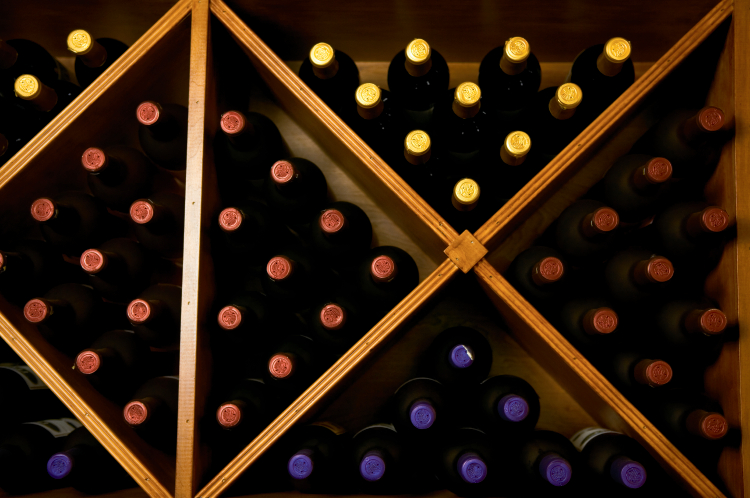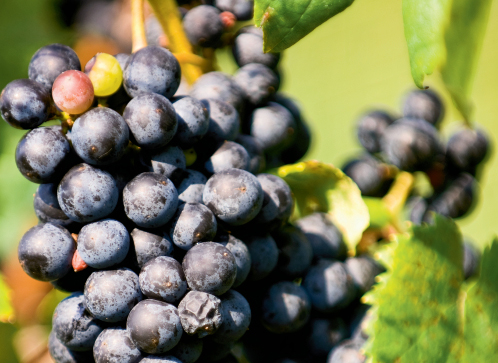Home > Nebraska > Nebraska Crops & Livestock > Nebraska Grapes: From Vines to Wines
Nebraska Grapes: From Vines to Wines

With more than 400 acres of grapes, 27 wineries and 11 tasting rooms (and counting), Nebraska’s wine country is maturing into a full-bodied member of the state’s agricultural industry. And for Nebraskans who enjoy wine and are looking for local options, the growth and development of the sector is encouraging.
Jennifer Montgomery, who is serving as the first full-time executive director of the Nebraska Winery and Grape Growers Association (NWGGA), says grape growers and winery owners are working together more than ever to promote the availability of Nebraska -produced wines and help consumers understand that those involved in the sector are serious about what they do.
“Not only is there a growing number of wineries, but several brands also are sold in the wine and spirits aisle of local stores,” Montgomery says. “In addition, you’ll find that some of these wineries are winning awards at national competitions. For some, growing grapes and making wine may be a hobby, but increasingly in Nebraska, I think you’ll find this is a serious business.”
Count Max McFarland among those who have made what was first a sideline into a full-fledged business. McFarland and his wife Theresa, both Nebraska farm kids whose agriculture roots date back to more than 100 years ago, are educators who didn’t plan to get their hands back in the dirt. That changed after Max developed an interest in viticulture. He now owns Mac’s Creek Winery and Vineyards, located just outside Lexington in central Nebraska.

“It started as a hobby, and I did lots of reading about grape culture,” he says, noting that his original plan was to grow grapes on his 12 acres and sell them to wineries.
That vision shifted about 10 years ago, and today Mac’s Creek Winery and Vineyards is an award-winning family affair, producing between 5,000 and 6,000 cases annually. The couple’s children are involved in all aspects of the business, from growing the grapes to making the wine, running the tasting room and restaurant, and planning events.
Montgomery says that, like McFarland, all Nebraska winery owners and operators recognize tourism and wineries go hand in hand. Some have even joined forces in regional areas to develop “wine trails.” This means groups of wineries in local areas promote each other to consumers, in order to boost business for all.
The NWGGA also has created the Passport Program. Consumers who visit at least 16 participating wineries and six tasting rooms can earn “Winery Bucks,” which can be used toward the purchase of Nebraska wines.
Montgomery says promoting the purchase of Nebraska wines doesn’t just help those involved in the industry. It has an overall positive economic impact on the state.
“To acquire a farm winery license in Nebraska, a winery must source 75 percent of the fruit from growers in Nebraska,” Montgomery says. “Therefore, when consumers purchase a Nebraska wine, they can be assured it is a local product and they are supporting local growers.” According to recent studies, the total economic contribution of the grape and winery industries has increased from $5.3 million in 2006 to an estimated $27.3 million in 2011.

“We are working with Mother Nature to create a viable grape and wine industry in our state,” McFarland says. “Yes, our winters are cold with lots of snow, but we are planning for that by planting cold-hardy grape varietals like Frontenac and Edelweiss. Our climate is very suitable for grapes, with warm summers and lots of sunshine.”
The biggest danger, McFarland notes, is the late frosts and freezes that sometimes present themselves in May, when the vines have started to bud.
“I have been involved in research that involves spraying our vines with vegetable oil, which delays bud break in the spring,” he says. “If we can delay bud break by a week to 10 days, we can avoid a lot of our spring frost damage.”
The state’s 200 or so grape growers start pruning their vines in December, have a bud break somewhere around the first of May, then start harvesting grapes as early as the first or second week of August, continuing into October.
Good wine always goes back to good grapes and careful fermentation, and Nebraska vintners like McFarland make certain quality is a priority.
“We believe we need to do everything possible to make the highest quality grapes delivered to our doorstep,” McFarland says. “Having the perfect fruit is vital, but it doesn’t guarantee you will make great wines. It takes meticulous care every step of the way, and it takes a massive team effort.”



